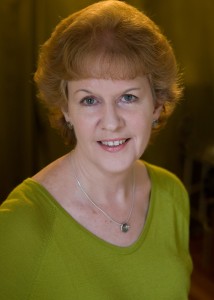 Bang.
Bang.
Bang, bang, bang.
Another shelf pried loose.
Bang, bang, bang, bang.
Nails bent and hammered into the wood. Another careful trip around the narrow landing, down the stairs, through the front door, down the driveway. Another long plank deposited beside the telephone pole. Back up the stairs.
Bang, bang, bang.
It felt good to be swinging a hammer, good to be working my body, giving my mind a rest. I felt busy, productive. And oddly satisfied to be breaking things down, splintering wood and dismantling the dark-stained desk, the uneven shelves, the flimsy cabinets. Out with the old.
I knew my next-door neighbors would be curious about the growing heap of lumber near the curb. Good. Maybe that would keep long-retired, well-intentioned George from asking about my job search or commenting on how much I seemed to enjoy spending time on my porch.
A few months earlier, I’d given myself permission to take the summer off after leaving a company where I’d worked for 18 years. I knew I had to get serious about finding a new job. But first, I had to face up to the 11×14-foot disaster area that was my home office. I’d intended to remodel that room when I’d moved in four years earlier, but somehow the project never made it to the top of my home-improvement list. Now, before I pushed myself back out into the world, I had to take that room apart and put it back together again. At the outset, I didn’t appreciate how much the room makeover had to do with the process of reinventing myself and—at long last—carving out the space for my writing life to begin in earnest. And not just the physical space.
When I’d first seen the house, I’d fallen for the built-in bookshelves in the living room. A ready-made office in one of the four small bedrooms—with a built-in desk in one corner and floor-to-ceiling shelves on three walls—seemed too good to be true. But now, lopsided stacks of books, boxes of photographs and seemingly every scrap of paper I’d amassed in nearly half a century of living had overtaken the office.
I’d started clearing out the room in July, when it was too hot for the demolition work. I’d dragged countless boxes and bags across the small upstairs hallway, covering virtually every inch of available floor space in two other rooms.
In July, I still half-believed I could salvage the built-ins with a fresh coat of paint, maybe some new trim. I soon discovered that like every other project in my 1923 house, there were no quick fixes. Once I’d begun, it was like pulling at a loose thread on a sweater—the entire room began to unravel. Empty, the shelves sagged and tilted. Exposed, the plaster walls had hairline fractures and deep gouges. And cleared of debris, the homemade desk from another era was an ergonomic nightmare for a computer.
And that’s just what was going on in the room; in my head, things were tilting and unraveling, too, exposing damaged surfaces and occasionally giving me nightmares.
By August, it was clear I’d have to demolish the built-ins and invest in new furniture.
By September, renovating the room—as exhausting as it was physically—had become the easy part of the project.
Bang.
Bang, bang, bang.
It had been a long, hot summer, as evidenced by my sweat-soaked clothes, my damp hair, and the blazing sun that beat down on my freckled arms with every trip I made down the driveway with an armful of broken-up furniture.
All summer I’d been working out in my head—or trying to—who I wanted to be at the end of my mid-life respite from work. I’d been reading books and attending “outplacement” classes funded by my former employer. I was almost certain I wanted to find my next job in the nonprofit sector, although I hadn’t entirely ruled out starting a freelance writing business. I had a pretty good idea of what I didn’t want to do next—virtually anything I had done up to that point. In August, I attended a nonfiction writing conference, although I felt like an imposter identifying myself as an actual writer; never mind that my summer of discontent had been punctuated with happy fits of writing, and I knew whatever I did next would have to allow for that to continue.
Still, I had more questions than answers about what my next chapter would look like. Until that September, it never occurred to me that some of the answers might be hiding under all that clutter from my office, or what I’d come to think of as The Museum of Me.
I dismantled the built-ins little by little. Early on each of my demolition mornings—before it got too hot in my un-air-conditioned house—I’d start with quiet tasks. I’d unscrew hinges or use a crowbar to coax strips of lumber and particleboard away from the floor and the interior walls of the cabinets below the desk. I’d tape paint swatches to the yellowed walls or browse online for new, functional furniture. Then, once it was a respectable hour to start making noise, I’d let the hammer ring out against the wood, working as long as I could.
Then I’d shower, slip into clean shorts and a fresh t-shirt, and grab a pile of artifacts from one of the other rooms. I’d plunk myself down on the bare hardwood floor in the middle of the mess I was both making and unmaking. I’d wedge open a dusty box, a creaky binder or a long-forgotten journal—and there I’d stay for an hour, maybe three, right in the middle of some earlier version of myself.
Sometimes I felt guilty about all the time I was spending sorting through my archives. I should be writing, I’d think, as I flipped through speeches I’d written for other people, pictures of long-lost friends, copies of invoices from my days as a freelance medical editor. I should be looking for a job, I’d worry, as I sifted through airline ticket stubs, old performance reviews, or notes a younger me had made in the margins of her books. I should be getting out of the house more, I’d chide myself, as I reread papers I’d written in graduate school, flipped through postcards I’d collected while traveling, thumbed through the high-school and college yearbooks I’d helped to edit.
Yet day after day I stayed there, deciding what to keep, what to toss, what to shred; sometimes the shredding was practical (old pay stubs), other times cathartic (old boyfriends). Some items I kept to remind me of who or where I didn’t want to be anymore—a box of crayons from an absurd management meeting near the end of my corporate tenure. Some I saved because they made me laugh—a photograph of me and two co-workers in our 1980s business attire, on roller skates (it’s a long story); or because they made me cry—letters, obituaries cut from the newspaper; or because they helped me remember who I’d been—old business cards; or who I’d meant to be—scraps of poems I’d started, newsletter articles I’d written, words that had my name attached to them.
Bang.
Bang, bang, bang.
All those exposed surfaces to spackle and sand. All the possibilities contained in a can paint. All the October days spent dragging newly delivered furniture pieces up the stairs and around the narrow landing to make a new desk, new bookshelves, new file cabinets. Some assembly required. All the nails driven into four freshly painted walls to hang photographs and artwork carefully curated from my collections—or purchased for my new space—to surround me, remind me, inspire me. All the talismans artfully arranged to keep me true to myself until I found my way back into the world again; and again, after that.
If anyone had asked about all the hammering—say my neighbor George—I would have said I was up to my eyeballs in yet another home-improvement project. Only I knew what had really been going on up there, under all that paper, over all that splintered wood and plaster dust.
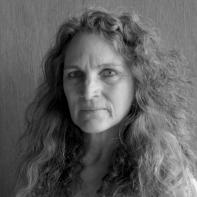
 Today we are pleased to feature author Joe Bardin as our Authors Talk series contributor. In this podcast, Joe discusses the process of envisioning and writing his essay “Trenton into Time.”
Today we are pleased to feature author Joe Bardin as our Authors Talk series contributor. In this podcast, Joe discusses the process of envisioning and writing his essay “Trenton into Time.”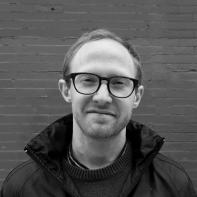
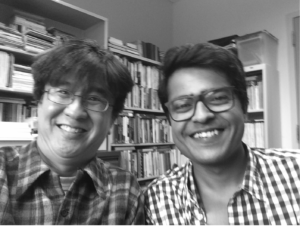 Today we are pleased to feature author Timothy Liu as our Authors Talk series contributor. In his podcast, Timothy is interviewed by Karthik Purushothaman, one of his graduate students, about his newest book,
Today we are pleased to feature author Timothy Liu as our Authors Talk series contributor. In his podcast, Timothy is interviewed by Karthik Purushothaman, one of his graduate students, about his newest book, 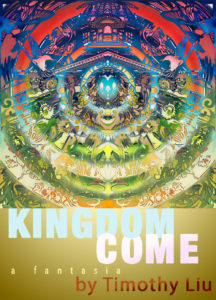 The pair discusses the book as a hybrid novel, and they explore the way it blends poetry and prose. Timothy also shares his process for this novel and reveals how he completed the first draft in 2008 after writing every day for three months. Karthik then asks Timothy about his inspirations, and Timothy talks about the different books that he kept on his desk while writing and how they influenced the book.
The pair discusses the book as a hybrid novel, and they explore the way it blends poetry and prose. Timothy also shares his process for this novel and reveals how he completed the first draft in 2008 after writing every day for three months. Karthik then asks Timothy about his inspirations, and Timothy talks about the different books that he kept on his desk while writing and how they influenced the book.